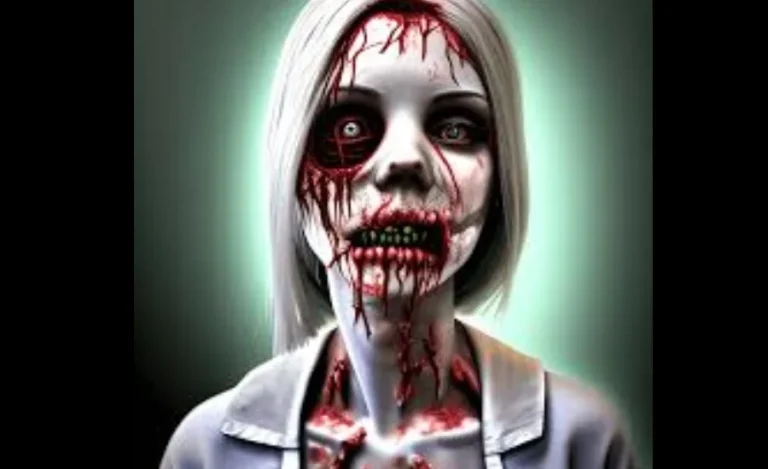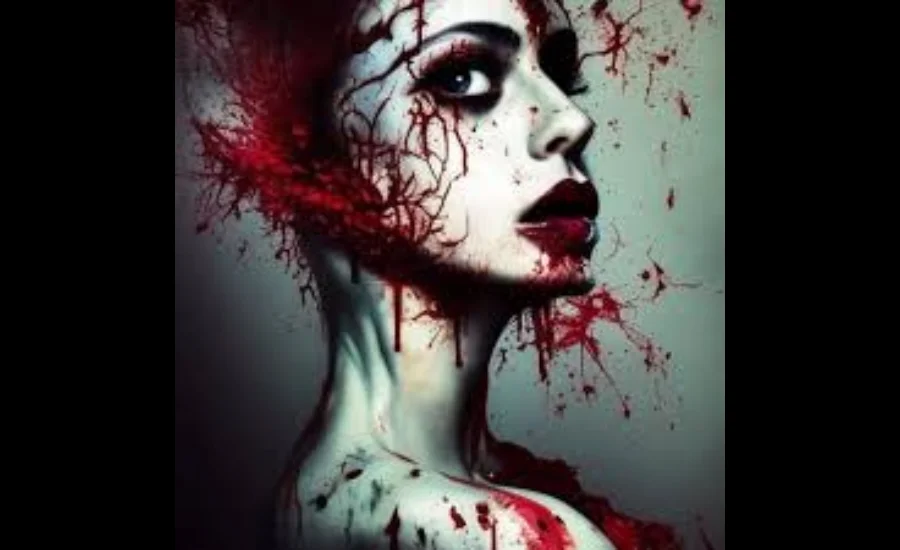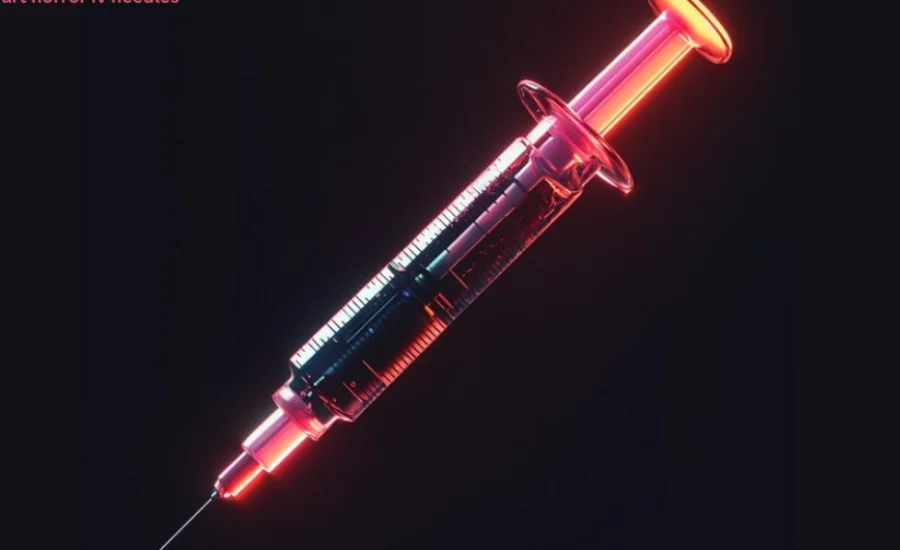AI Art Horror IV Needles: 10 Chilling Examples of Fear-Inducing Imagery

AI Art Horror IV Needles The intersection of technology and creativity has long been a fertile ground for innovation. Artificial intelligence (AI) has dramatically reshaped the art world in recent years, giving rise to a new genre of creative expression: AI-generated art. AI Art Horror IV Needles What’s even more fascinating is how AI art is being used to explore darker, more unsettling themes, including horror. AI Art Horror IV Needles In this particular sub-genre, elements like IV needles—a symbol of both medical intervention and personal vulnerability—become central motifs. The combination of AI-driven art, horror themes, and the eerie symbolism of IV needles has created a chilling new form of artistic expression that captivates and unsettles viewers.
In this article, we’ll explore how AI-generated horror art, specifically focusing on the theme of IV needles, pushes the boundaries of imagination, emotion, and the evolving landscape of art.
The Rise of AI Art and Horror
AI Art Horror IV Needles Artificial intelligence has seen exponential growth in recent years, extending its reach into virtually every sector, including healthcare, education, entertainment, and, of course, the arts. With tools like neural networks and deep learning algorithms, AI can replicate, mimic, and even innovate upon traditional artistic styles. AI has proven itself a capable creator, whether generating a surreal landscape, a hauntingly realistic portrait, or abstract compositions.
One of the more provocative uses of AI in art is its application in the horror genre. By its very nature, horror plays on human fears and anxieties, invoking visceral emotional responses through images, sound, and narrative. With its unsettling precision and ability to blend the real and the unreal, AI-generated horror art adds a new layer of dread. By synthesizing disparate and often grotesque elements, AI offers a unique approach to horror, producing unpredictable and frequently alarming results. AI Art Horror IV Needles
Why IV Needles? AI Art Horror IV Needles

IV (intravenous) needles are commonly associated with medical settings—hospital stays, injections, and life-saving treatments. AI Art Horror IV Needles For many people, however, IV needles evoke fear and discomfort, tied to the idea of vulnerability, pain, and the loss of control. These associations make IV needles a potent symbol when incorporated into horror art. Whether placed within the context of medical horror or depicted as instruments of torture, IV needles strike a psychological nerve, triggering primal fears.
When combined with AI-generated horror art, IV needles take on their own life. They transform from mere medical tools into objects of terror, their sterile, clinical nature contrasting sharply with the dread they evoke. Whether used subtly or prominently in a piece of art, IV needles serve as a focal point for fear and anxiety, tapping into our most intimate vulnerabilities. AI Art Horror IV Needles
The Role of AI in Amplifying Horror
What makes AI-generated art unique is its ability to operate outside the constraints of human creativity. AI doesn’t have the same emotional or moral limits as human artists do, allowing it to explore darker, more abstract themes in ways humans may shy away from. When tasked with creating horror art, AI can produce images that feel wrong on a deep, almost instinctual level, intensifying the unsettling nature of the work.
For example, an AI might render a scene in which a figure is hooked up to IV needles, but with a twist—perhaps the needles are impossibly large or attached to a mechanical, spider-like apparatus. The figure’s expression may be eerily calm, adding to the unsettling nature of the image. AI Art Horror IV Needles Because AI can blend realistic textures and surreal, nightmarish scenarios, the result is a believable and alarming image.
In many cases, AI-generated art leverages its understanding of human anatomy and real-world objects (like IV needles) to create juxtapositions that challenge our sense of reality. For example, an AI-generated image might depict a sterile hospital room, but with the IV needles snaking out in impossible directions, dripping black ink instead of medication. The result is an unnerving blend of the familiar and the surreal.
The Uncanny Valley and AI Art

One of the most exciting phenomena in AI art is its relationship to the uncanny valley. The “uncanny valley” refers to the discomfort we experience when something looks almost but not quite human. This effect is amplified in horror, where images of near-human figures—perhaps medical patients with slightly distorted features or an eerie calmness in their expression—tap into our primal fears of the unknown and the inhuman. AI Art Horror IV Needles
IV needles in AI art can push this uncanny effect to new levels. Imagine an AI-generated hospital scene where patients are connected to IVs. Still, their eyes are slightly too wide or their skin too smooth, creating an otherworldly, almost robotic feel. The closer these figures come to appearing human, the more disturbing they become as they occupy the space between life and lifelessness.
Exploring Themes of Vulnerability and Control
AI Art Horror IV Needles One of the most compelling aspects of horror is its ability to explore complex themes like vulnerability and control. In traditional horror narratives, characters are often at the mercy of forces beyond their control, whether a killer, a supernatural entity, or a disease. IV needles are a fitting metaphor for this loss of power; they represent medical intervention but also a surrender of autonomy as patients become dependent on external forces for survival.
AI-generated horror art that incorporates IV needles plays with this theme of control uniquely disturbingly. AI Art Horror IV Needles The needles may be exaggerated, multiplying in number or size, or depicted as autonomous, moving entities. In some pieces, the figure hooked up to the IVs may appear eerily passive, as if resigned to their fate. This passivity can be far more unsettling than overt fear or panic, suggesting a complete surrender to whatever malevolent force is in control.
AI’s ability to amplify these themes of vulnerability and control takes the horror to a psychological level. Viewers are left grappling with the tension between human fragility and the machine-like precision of the IV needles, creating a sense of helplessness and fear long after leaving the artwork behind.
The Future of AI Art and Horror
As AI continues to evolve, so will its applications in art, including horror. We can expect even more sophisticated and unsettling creations as AI becomes better at understanding and manipulating human emotions, fears, and aesthetic preferences. Horror artists using AI will likely push boundaries even further, incorporating more complex themes and imagery, including IV needles and other symbols of fear, pain, and vulnerability.
AI Art Horror IV Needles This raises important questions about the ethical implications of AI-generated horror art. Where do we draw the line if AI can produce art that can evoke such strong emotional responses? Is there a point when AI-generated horror becomes too disturbing and visceral for public consumption? These questions will likely come to the forefront as AI-generated art becomes more prevalent in the horror genre.
Conclusion
AI-generated horror art, focusing on unsettling themes like IV needles, represents a fascinating intersection of technology, creativity, and fear. By pushing the boundaries of what is possible in art, AI offers a unique perspective on horror that is profoundly emotional and disturbingly precise. IV needles, as symbols of vulnerability and control, play a crucial role in amplifying the psychological impact of this new form of art.
As AI continues to evolve and integrate into the world of horror, we can expect even more innovative, eerie, and thought-provoking creations. In a sense, AI horror art challenges us to confront our fears and the very nature of creativity—blurring the lines between human and machine, reality and nightmare.





